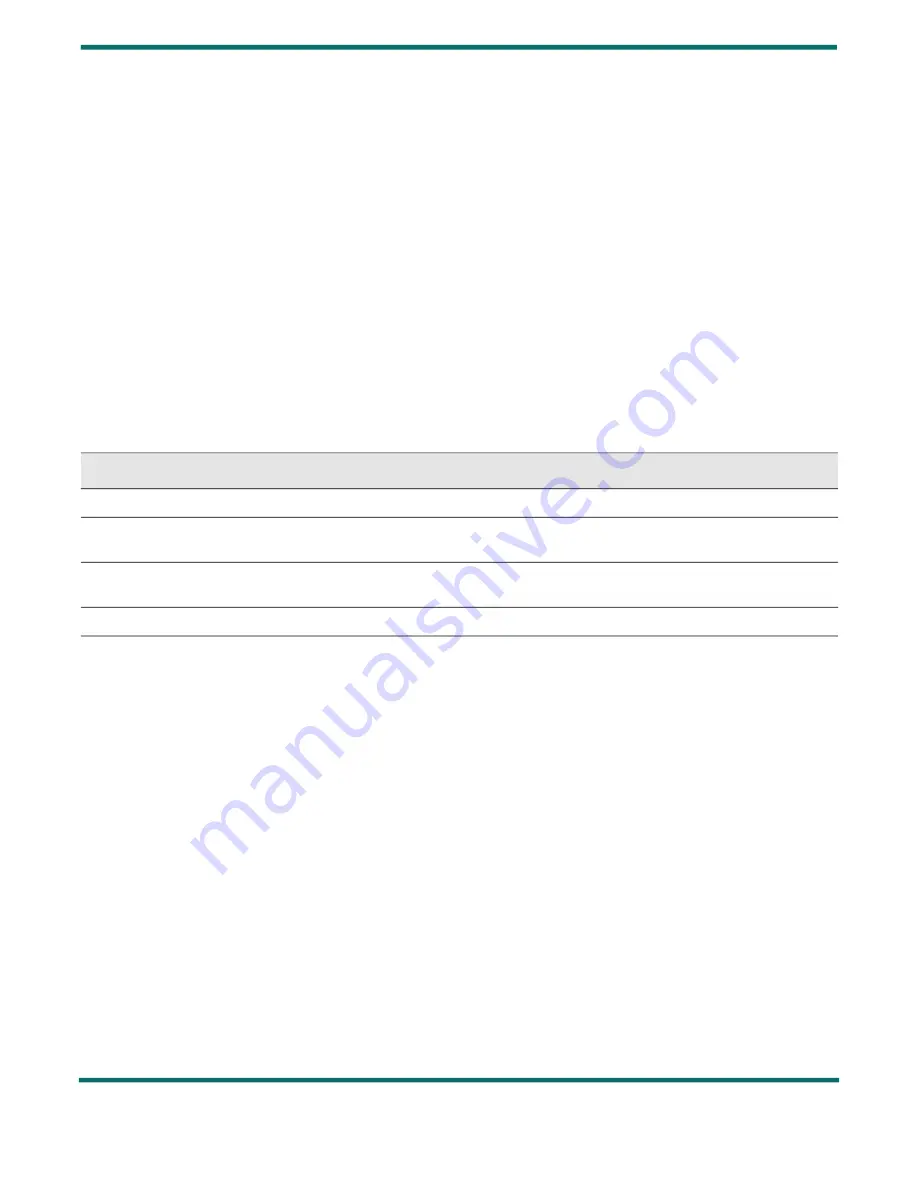
LR1110
User Manual
Rev.1.0
UM.LR1110.W.APP
March 2020
117 of 130
Semtech
14. Test Commands
Several LR1110 test commands allow an easy configuration of the device for regulatory ETSI or FCC compliance.
14.1 Regulatory Overview
This section only describes the RF modes necessary for ETSI and FCC regulatory testing. Please refer to the ETSI and FCC
documents for a detailed test description and for the test limits indication.
14.1.1 ETSI
The EN 300 220 specification describes 4 test signals which the EUT (Equipment Under Test) should be able to transmit for
the CE certification. These test signals are listed in the table hereafter, with the operating mode correspondence for the
LR1110.
The user should be able to modify the operating frequency, output power, and modulation parameters for the ETSI tests.
The user should also be able to receive the incoming RF packets for any configuration (frequency, modulation parameters),
and to determine a PER /Packet Error Rate) indication of the receive quality.
All this can be done using the regular LR1110 radio commands.
14.1.2 FCC
The FCC part 15.247 is applicable to frequency hopping and digitally modulated systems. For those tests, only a
unmodulated carrier (TX CW) and regular a packet transmission are required.
The user should be able to modify the operating frequency, output power, and modulation parameters for the FCC tests.
This can be done using the regular LR1110 radio commands.
Table 14-1: ETSI Test Signals
Test Signal
Description
LR1110 Operation
D-M1
Unmodulated carrier
TX CW mode (
SetTxCw
( )command)
D-M2
Continuously modulated signal with the greatest occupied RF bandwidth
Continuous modulation
(
SetTxInfinitePreamble( )
command)
D-M2a
Same as D-M2 signal, but not continuous
RF packet transmission: LoRa®: SF12,
BW500, 50% duty cycle
D-M3
Normal operating mode of the EUT in the application
Operation as in the application














































